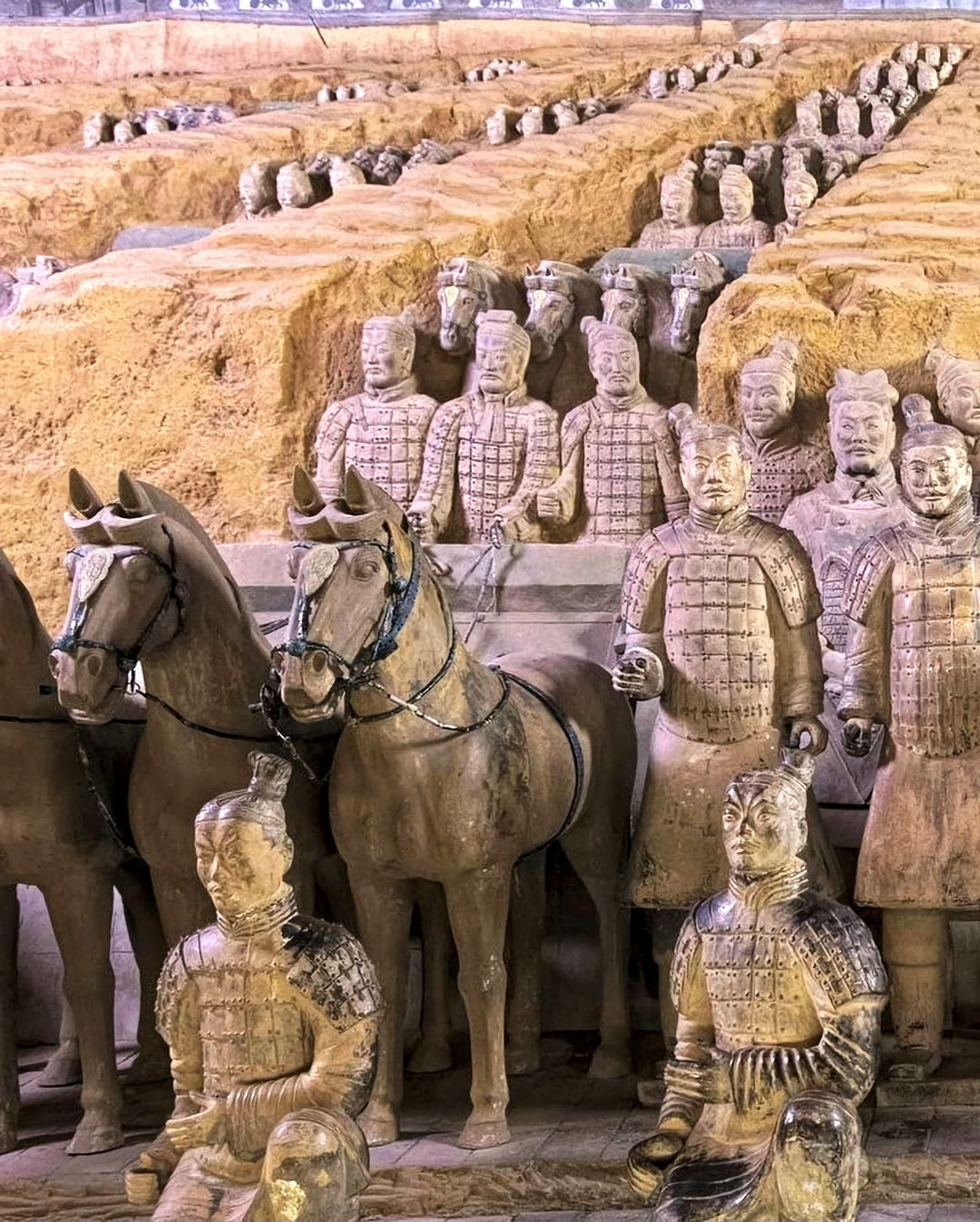The discovery of the Terracotta Army in 1974 by a local farmer near Xi'an, China, unveiled a silent yet eloquent testament to the grandeur of China's first emperor, Qin Shi Huang.
The discovery of the Terracotta Army in 1974 by a local farmer near Xi'an, China, unveiled a silent yet eloquent testament to the grandeur of China's first emperor, Qin Shi Huang. These clay soldiers, numbering more than 8,000, stand as a frozen army, each with a unique face, distinct expressions etched into their earthen features, symbolizing the diverse humanity of Qin's vast empire.
The Terracotta Army, buried for over two millennia, is not just a collection of statues; it is a cultural and historical enigma, a glimpse into the ancient world's complexities and artistic ingenuity. These figures, varying in height between 1.83 and 1.95 meters, were not mere representations but individualized portraits of the soldiers who served under Qin Shi Huang. Each statue is a story, a life, a silent guardian of history's depths.
The scope of this monumental endeavor extends beyond the soldiers. The site also includes 520 horses, 130 chariots, and 150 cavalry horses, intricately crafted with the same attention to detail as their human counterparts. This assembly, a microcosm of Qin's military might, was not just a display of power but also an expression of the emperor's belief in an afterlife where he would continue to rule with the same authority and protection.
The Terracotta Army guarded the tomb of Qin Shi Huang, China's unifier, a ruler who left an indelible mark on history through his accomplishments and the authoritarian regime he established. This army, silently standing in formation for centuries, was meant to accompany him into the afterlife, ensuring his dominance and safety in a world beyond our understanding.
Unearthing this site offered the world a window into ancient Chinese civilization, its beliefs, artistry, and the lengths to which its leaders would go to secure their legacy. The Terracotta Army is not just a collection of clay figures; it's a bridge to the past, a poignant reminder of the transitory nature of life and the enduring quest for immortality. In these silent sentinels, we find the echoes of an ancient world, a powerful narrative of human endeavor, creativity, and the timeless pursuit of eternity.


